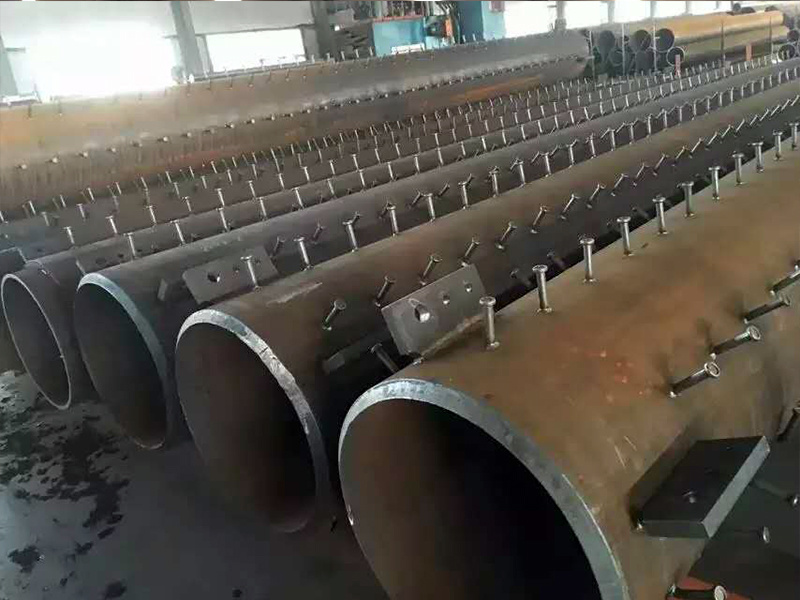Steel Structure Projects: Shaping the Skyscrapers of Tomorrow
Release time:
2025-04-11
Steel Structure Projects: Shaping the Skyscrapers of Tomorrow Table of Contents 1. Introduction to Steel Structures 2. The Advantages of Steel in Construction 2.1 Durability and Strength 2.2 Cost-Effectiveness 2.3 Speed of Construction 3. Innovations in Steel Structure Design 3.1 Modular Construction Techniques 3.2 Integration of Advanced Technology 4. Sustainability in Steel Structure Projects 4.

Steel Structure Projects: Shaping the Skyscrapers of Tomorrow
Table of Contents
1. Introduction to Steel Structures
2. The Advantages of Steel in Construction
2.1 Durability and Strength
2.2 Cost-Effectiveness
2.3 Speed of Construction
3. Innovations in Steel Structure Design
3.1 Modular Construction Techniques
3.2 Integration of Advanced Technology
4. Sustainability in Steel Structure Projects
4.1 Recycling and Reusability
4.2 Energy Efficiency in Steel Buildings
5. Key Steel Structure Projects Around the World
5.1 Iconic Skyscrapers Leading the Way
5.2 Emerging Trends in Urban Architecture
6. The Future of Steel Structures
7. Frequently Asked Questions (FAQs)
8. Conclusion
1. Introduction to Steel Structures
Steel structures have become a cornerstone of modern architecture, enabling the construction of soaring skyscrapers and expansive commercial spaces. The unique properties of steel—its **strength**, **flexibility**, and **lightweight nature**—allow architects and engineers to push the boundaries of design and create buildings that were once thought impossible. As urbanization accelerates and cities expand vertically, understanding the role of steel in structural projects becomes crucial.
2. The Advantages of Steel in Construction
Steel offers numerous advantages that make it an ideal choice for construction projects, particularly in urban environments where space is at a premium.
2.1 Durability and Strength
One of the primary benefits of steel is its **exceptional tensile strength**, which allows it to withstand heavy loads and extreme weather conditions. Unlike other materials, steel does not warp or degrade over time, ensuring that structures maintain their integrity for decades.
2.2 Cost-Effectiveness
When it comes to large-scale projects, the initial investment in steel can seem significant. However, the **long-term savings** associated with durability, low maintenance needs, and reduced construction time make steel a cost-effective choice overall.
2.3 Speed of Construction
Steel structures are typically prefabricated, meaning they can be constructed off-site and assembled quickly on location. This **time efficiency** is particularly valuable in urban settings where construction delays can lead to significant financial losses.
3. Innovations in Steel Structure Design
The evolution of steel construction techniques has led to remarkable innovations that have transformed the industry.
3.1 Modular Construction Techniques
Modular construction involves creating pre-engineered sections of a building that can be easily transported and assembled. This technique not only reduces construction time but also minimizes disruption in urban areas.
3.2 Integration of Advanced Technology
The rise of Building Information Modeling (BIM) has revolutionized the planning process. It enables architects and engineers to visualize and analyze structures in a simulated environment, improving accuracy and efficiency.
4. Sustainability in Steel Structure Projects
As sustainability becomes a focal point in construction, steel structures are leading the charge towards greener building practices.
4.1 Recycling and Reusability
Steel is 100% recyclable, making it an environmentally friendly choice. Steel structures can be dismantled and reused, significantly reducing waste and promoting circular economy principles.
4.2 Energy Efficiency in Steel Buildings
Modern steel buildings are designed with energy efficiency in mind, often incorporating insulation and energy-efficient systems that reduce their overall carbon footprint.
5. Key Steel Structure Projects Around the World
Several iconic steel structure projects have set the standard for architectural excellence and innovation.
5.1 Iconic Skyscrapers Leading the Way
Skyscrapers such as the **Burj Khalifa** and **Shanghai Tower** showcase the capabilities of steel in supporting vast heights and complex designs. These structures not only redefine city skylines but also embody engineering marvels.
5.2 Emerging Trends in Urban Architecture
As cities evolve, emerging trends like mixed-use developments and smart buildings are incorporating steel structures to enhance functionality and aesthetics. These projects reflect a shift towards incorporating community spaces and technology in urban planning.
6. The Future of Steel Structures
The future of steel structures looks bright, with ongoing advancements in materials science and construction techniques. As architects continue to innovate, we can expect to see more **sustainable**, **aesthetic**, and **functional** designs that will shape the skylines of tomorrow.
7. Frequently Asked Questions (FAQs)
What are the main benefits of using steel in construction?
Steel offers durability, cost-effectiveness, and rapid construction timelines, making it an ideal choice for modern buildings.
How does modular construction impact project timelines?
Modular construction significantly reduces project timelines by allowing for off-site prefabrication, leading to faster on-site assembly.
Is steel environmentally friendly?
Yes, steel is 100% recyclable, and modern steel structures are designed for energy efficiency, contributing to sustainable building practices.
What are some examples of famous steel structures?
Iconic steel structures include the Burj Khalifa, Shanghai Tower, and numerous skyscrapers in major cities around the world.
What innovations are shaping the future of steel structures?
Innovations such as Building Information Modeling (BIM), advanced material science, and sustainable building practices are shaping the future of steel construction.
8. Conclusion
Steel structure projects are not merely a trend; they represent a fundamental shift in how we approach construction and architectural design. With their unparalleled strength, flexibility, and sustainability, steel structures are redefining the skylines of our cities and setting the stage for the skyscrapers of tomorrow. As we continue to innovate and adapt, the possibilities for steel in construction are limitless, paving the way for a more sustainable and efficient future in urban architecture.
Tag:
Related News


Can't find the service you're looking for? Contact us!
To inquire about our products, please leave your email to us and we will contact you within 24 hours.
Contact Us
Telephone:+86 15522531711
Landline:086 22-86220000
E-mail:18133150209@139.com
Address: Three Communities of Agricultural Corporation of Lutai Economic Development Zone, Tangshan City,China




